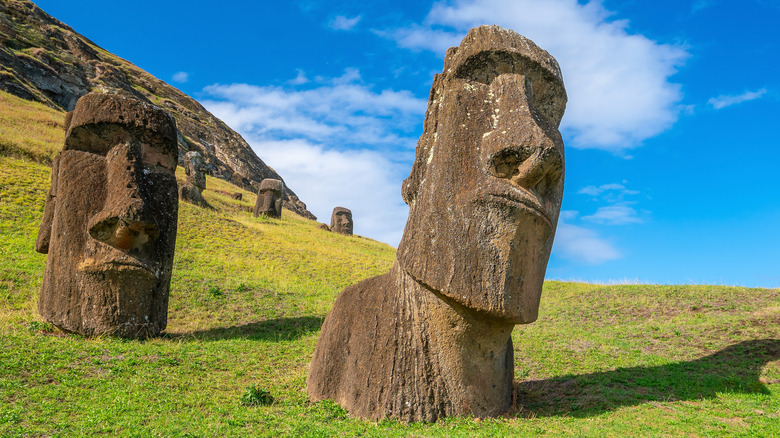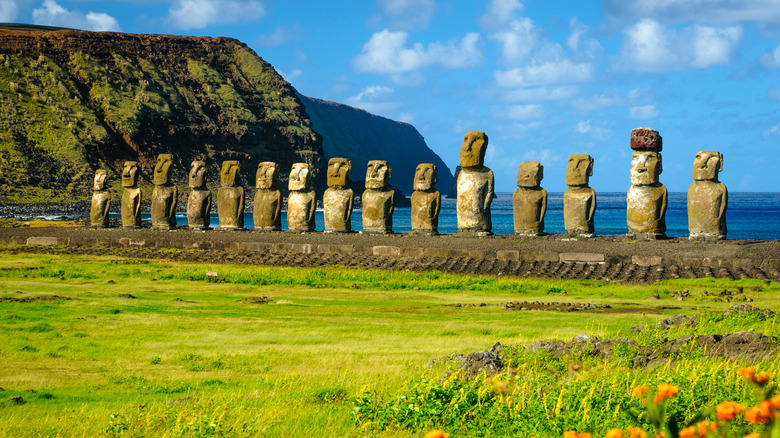Why Easter Island Has No Trees
Easter Island, per Britannica, is a lonely, beautiful place in the Pacific Ocean, located 2,200 miles from the coast of Chile. It's home to the rather sizable Mount Terevaka, and is also known as Te Pito te Henua, or the Navel of the World. The island has a modest and largely Polynesian population, but it's best known for some of its other residents: the iconic and mysterious Easter Island heads.
Per Easter Island Tourism (via The Vintage News), these fascinating sculptures average around 40 tons in weight and are around 15 feet tall. The volcanic tuff (hardened volcano ash) statues are known by some residents as moai, and the question of their significance is one that is still hotly debated. However, Easter Island is home to yet another intriguing mystery: there are no trees there. Here's why.
According to Robert Krulwich of NPR's Krulwich Wonders, Easter Island did once have trees, and lots of them — perhaps millions. The first Polynesian settlers arrived around 1200 A.D., and are believed to have started to decimate the trees as they began to farm and their population grew and grew. Humanity, tragically, seems to have acquired expertise in finding resources and bleeding them dry, but the fate of forests on Easter Island seems to be more complex than the result of human hubris alone.
A number of factors besides heavy-handed humanity
In a paper titled "The Deforestation of Easter Island" (via the National Library of Medicine), Valentí Rull challenges the view that the loss of trees was an "abrupt island-wide event caused by the prehistoric Rapanui civilization, which precipitated its own cultural collapse." Instead, according to Rull, there were a number of factors at play (including natural droughts), and different areas were affected at varying speeds. Palm trees did indeed give way to fields of grass, but seemingly not in one quick, brutal wave of destruction.
The suggestion that those iconic moai are to blame (as they got bigger and bigger and logs and space were both perhaps needed to move them into position) is a common one, Scientific American reports. There are yet more aspects to consider, too. Per Live Science, Polynesian rats featured heavily in the diets of the islanders, as determined through radiocarbon dating of teeth remains and other methods, and a proliferation of rats (perhaps brought to the island by European travelers) certainly wouldn't have helped the tree population.
Reforestation efforts continue, per Deutsche Welle, but the hot conditions and volcanic soil (which doesn't retain moisture from rain) just add to the issues the island faces and has faced, which humans aren't solely responsible for.

